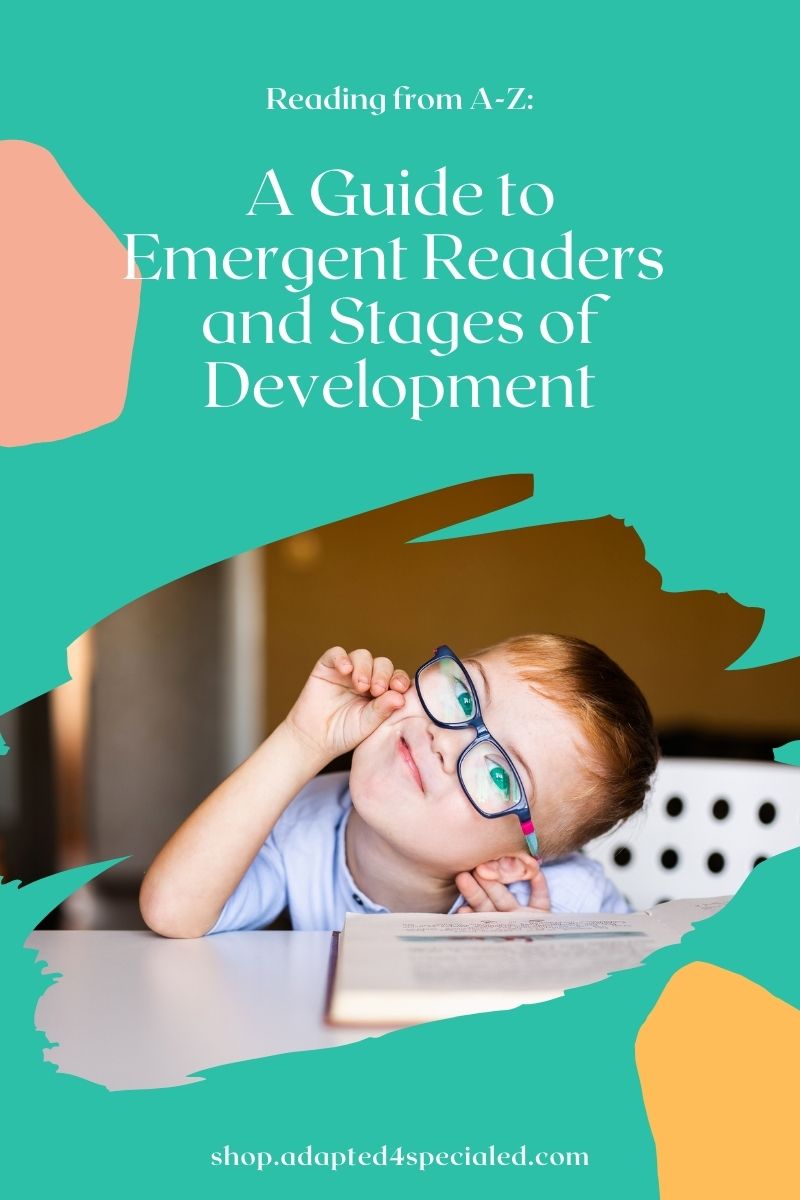As a teacher, you know each of your students is unique. Never is that more apparent than with developing readers.
But you have lesson plans to propose and an entire class of students to teach.
You don't have time to design a reading development strategy for each of your little readers. Instead, you need a plan that will meet your students where they are, wherever that may be.
That's where the stages of reading development come in.
From early emergent readers to fluent readers, this simple breakdown helps you understand what stage each of your students is in so you can better meet their needs.
Want to know how to keep your readers on track and engaged?
Check out this guide to designing an instruction plan that addresses student readers of all stages.
What Is an Emergent Reader?

The emergent reader stage is one of the most vital in a student's journey. After all, 65% of 4th-grade students read at or below an early fluent reading level, which is only one step above the emergent reader stage.
Making sure a student progresses beyond emerging reader status with confidence and excitement, then, is important for assuring they improve beyond a basic level of reading comprehension.
Compared to an early emergent reader, emergent readers have learned the alphabet and have a handle on a large vocabulary of CORE words.
They've progressed beyond picture books and books with small regions of text. Now, your emergent readers have a good understanding of phonics and are starting to comprehend word meanings in addition to word sounds.
Emergent readers will typically read books with increasingly larger blocks of text. They can handle more complex sentences and rely less on pictures for comprehension.
While they may read books on familiar topics like home and family life, these stories go into greater depth than their early emergent reader precursors.
What's more, these students will have more confidence in recognizing high-frequency words.
They're venturing into both fiction and non-fiction stories. And most excitingly, emerging readers have begun to discover that reading has many uses and purposes beyond the classroom.
How to Engage and Excite Your Emergent Reader
Engaging and exciting your emergent reader is all about choosing the right books and offering assistance only when needed. The reasons behind this latter point are twofold.
First, your student needs to know they are supported and that you're there for assistance with sounding out words or comprehending definitions if needed.
But secondly, too much help can actually be detrimental to the child's confidence in their abilities.
They need to know that you think they can read independently. That way, it gives them the space to form their own confidence in reading independently.
The other tips for engaging and exciting your students is a no-brainer.
Choosing the right books that are challenging but not so challenging that the student feels defeated is vital to helping emerging readers move into the next stage of development. Our phonics collection starts at the very beginning.
Here are three books that we think are perfect for your emerging reader:
- A Giraffe and a Half by Shel Silverstein
- Look What I Can Do by Jose Aruego
- Do You Want to Be My Friend? by Eric Carle
The 4 Stages of Reading Development
If you have a student who is still struggling to achieve emergent reader status despite your very best efforts, it's time to return to the four stages of development.
That way, you can see where your student is lagging while also exciting your little reader with all the learning they have to look forward to.
1. Early Emergent Readers

Early emergent readers are just beginning their reading journey.
These students are typically 6 months to 6 years old and are learning the alphabet.
As they advance, these readers begin to recognize the difference in uppercase and lowercase letters.
Aside from the alphabet, early phonics is extremely important during this phase.
Children should be learning the relationship between the way a letter looks and its associated sound, beginning with the differences in vowels and consonants.
You'll know your early emergent reader is on the cusp of becoming an emergent reader when they begin to automatically recognize high-frequency words (core vocabulary words).
Also, your almost-emergent readers will be able to read consonant-vowel-consonant (CVC) words.
2. Emergent Readers
As we mentioned above, emergent readers have learned the alphabet and are beginning to understand early phonics.
They can often read independently with assistance if needed.
You know your emerging reader is moving on to the next stage if they're starting to comprehend word meaning more automatically instead of focusing on word recognition alone.
3. Early Fluent Readers

This stage is where the magic starts to happen. Early fluent readers are typically between the ages of 7 years and 10 years old.
And at this point, not only can students identify word sounds on their own but they can also comprehend those word meanings independently.
These readers should be given books of different varieties now so that they can appreciate the diversity of the form.
This is a great time to introduce students to genre fiction, an excellent way to excite your early fluent readers with fun, engaging stories.
Complete independence while reading and comprehending is a signal that your early fluent reader is ready to progress.
4. Fluent Readers

If your student or child has made it to this stage, congratulations!
Considering that only 34% of 8th graders achieved National Assessment of Educational Progress "Proficient" reader scores in 2018, this is truly an accomplishment for the record books.
A hallmark of this stage is the ability to read aloud with proper pauses for punctuation.
Fluent readers need absolutely no assistance with reading comprehension. And they are starting to actually understand the meaning behind what they read instead of just comprehending word meanings.
At this point, your fluent reader should begin to choose their own books and form preferences about what they like to read.
This is an exciting time in a student's reading development journey. But it's also an exciting point, in general, since becoming a fluent reader is a major pit stop along the road to true independence.
Special Education for Your Struggling Reader
Are your emergent readers struggling to move on to the next stage of development?
Check out AdaptEd's carefully curated selection of books to engage and excite your child or students today!





